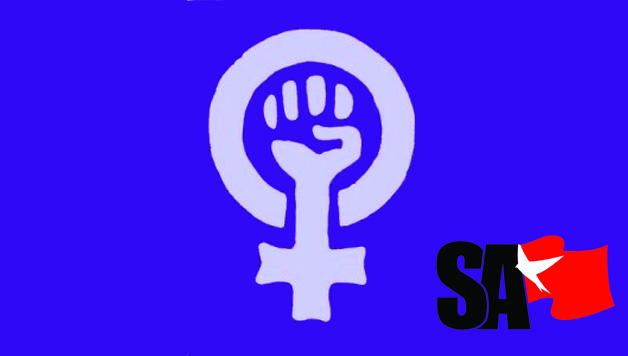Many people know that we still have a long way to go to achieve workplace equality in the U.S. But what many do not realize is that the problem is getting worse, not better.
Despite decades of women struggling for equal pay and slowly closing the gender wage gap, the disparity actually increased from 2002 to 2003. Among full-time year-round workers, women’s median earnings dropped from 77% of men’s to 76% (Census Bureau, August 2004). According to a June 2004 report by the Institute for Women’s Policy Research, the average income from 1983 to 1998 of all women aged 26 to 59 was only 38% of the income of men of the same ages
This earnings disparity results from workplace discrimination, the added burden of taking care of families, and the type of jobs that women typically have. While women make up 48% of the national workforce, they are the majority of workers in the service industry – particularly concentrated in traditionally “female” jobs.
Women employees made up more than 69% of those in education services in 2001, as well as 82% of social-service employees, 77% of hospital employees, and 51% of all retail employees. These industries typically pay less than manufacturing jobs, which are predominately held by men.
Also, more than 55% of all contingent workers (temporary, contractual, or part-time) were employed in the service sector (Bureau of Labor Statistics, 2001). These workers are often treated as disposable, quickly fired if they get sick or have to stay home with a sick child.
Healthcare, pensions, and other benefits such as paid vacation and parental leave are often not available to these workers. In 2001, around 91% of all contingent employees did not receive any healthcare coverage from their employer. Women workers bear the brunt of this economic insecurity because they make up 55% of temporary workers and 70% of part-time workers.
Unfortunately, more and more workers are being forced to rely on these low-paying, insecure jobs because corporations are trying to downsize the good-paying union jobs. According to the Economic Policy Institute, more than 3 million manufacturing jobs in the U.S. have disappeared since 1998, and the wages of jobs being created are, on average, 21% lower than the jobs that are lost. This continuing trend means that by 2010, about 30% of U.S. workers will be making less than poverty wages, according to the U.S. Department of Labor.
Women Hit the Hardest
Because women still do the majority of housework and childcare, these low wages, lack of benefits, and job insecurity hit women even harder than men. Because of this, many women (especially those with children) have a very hard time making ends meet on their own, and are often forced to remain economically dependent on men, even if they are abusive.
The concentration of women in low-paying, part-time jobs also goes hand in hand with sexual harassment and discrimination in the workplace. A good example of this is Wal-Mart, which is facing the largest class-action lawsuit in U.S. history, representing every woman hired by the store since 1998 (1.6 million women).
Supporters of the lawsuit found that women workers at Wal-Mart earned 6.2% less than men in similar jobs. Women constitute 72% of the company’s workforce, yet men hold 90% of the managerial positions (ksworkbeat.org). The atmosphere inside Wal-Mart is rife with sexism, with business trips that include stops at strip clubs and mandatory managerial meetings at Hooters.
The women’s movement over the past century has made a lot of headway in undermining the discrimination and exploitation of women, but there is still much that needs to be changed.
Getting Organized to Fight Back
Corporations in the expanding service sector are getting away with such inhumane work practices because the labor movement has not yet carried out successful union drives throughout the service sector.
Beth Shulman, a former United Food and Commercial Workers vice president, explains: “Take autoworkers, who had horrible jobs that became good ones because of unions and social legislation. The same thing must happen with currently low-paying service-sector jobs. In Las Vegas, for example, the housekeeper represented by the Hotel Employees & Restaurant Employees has decent wages and benefits thanks to unionization.”
Workers who organize unions raise their pay and benefits, reduce discrimination and sexual harassment, and narrow the income gap for people of color and women. According to the U.S. Bureau of Labor Statistics, union workers earn 27% more than non-union workers. Union women earn 33% more than non-union women; African American union members earn 35% more than their non-union counterparts; and for Latino workers, the union advantage is 51%.
The Service Employees International Union is the fastest growing union in the country, but solving the problems women face will require, at minimum, a determined struggle to unionize the biggest corporations in the service sector – particularly companies like Wal-Mart that set such low standards for wages and workers’ rights.
Forming unions and organizing mass strikes and rallies has proven to win concrete gains in the daily lives of women and all workers. Working men and women share a common struggle – it’s in our mutual interest to defend the rights of women and all workers.


